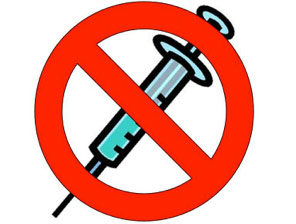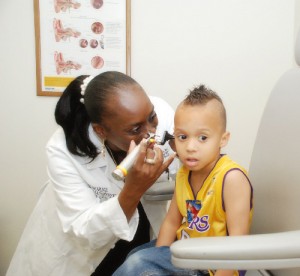- New Sublingual Allergy Tablets - October 31, 2014
- Ground-breaking New Treatment Option for Sleep Apnea - September 27, 2014
- Allergies versus Viruses in Children - September 27, 2014
- “Dog Dust” Protects Children from Allergies - September 27, 2014
- Nasal Saline Irrigation - August 8, 2014
- Doctor, I am Allergic to Dust. What Can I do? - July 31, 2014
- Infants Exposed to Dust Mites Less Likely to Develop Allergies - June 23, 2014
- How to Treat a Young Child’s Cough - December 17, 2013
- Many Parents are Unaware That Their Children Are at Risk for Noise Induced Hearing Loss - December 9, 2013
- Is it a Cold or an Ear Infection? - December 9, 2013
 Allergies are on the rise, with more children developing allergies than ever before. While we do not understand why this is happening, we do have an understanding of how allergies work. This helped the design of a revolutionary system of allergy desensitization, called sublingual immunotherapy (allergy drops), to make your child less (or not) allergic.
Allergies are on the rise, with more children developing allergies than ever before. While we do not understand why this is happening, we do have an understanding of how allergies work. This helped the design of a revolutionary system of allergy desensitization, called sublingual immunotherapy (allergy drops), to make your child less (or not) allergic.
What are allergies?
Your body’s immune system is designed to respond when it senses foreign particles that can injure it. The system developed to fight viruses and bacteria. However, when the immune system doesn’t work perfectly, it starts to react to particles that are not dangerous. This is what happens in allergies. Your body thinks that particles such as dust or pollen are dangerous and treats them like viruses and bacteria. It mounts a reaction to these particles to try to protect your body. This reaction, because it is the same reaction your immune system makes to a virus, feels like an infection. Symptoms include:
- Low grade fever
- Runny nose
- Cough/congestion
- Fatigue and weakness
How can allergies be treated?
Traditionally, we have used medications that are targeted to the immune system response. When the immune system responds to dust (or other allergen), it releases a chemical called histamine. Histamine produces the classic allergy symptoms listed above. Medications called antihistamines fight the histamine response and control those symptoms. This can be in nasal spray or oral form. Steroids may also help in treatment.
Allergy shots are a form of immunotherapy that was developed as a way to teach your immune system to stop reacting to allergens. Immunotherapy simply means treating the immune system. By presenting small doses of your allergen frequently, your body stops thinking of the allergen as an enemy and no longer releases histamine and other chemicals. While effective, allergy shots were frustrating for patients because of the need to go to the doctor weekly and have a shot each time. This is particularly difficult for children, who know that they are having an injection every week.
Recently, the same idea behind allergy shots was converted into allergy drops called sublingual immunotherapy (SLIT). SLIT is the newest form of allergy treatment that is painless and as effective as allergy shots.
What are allergy drops?
Allergy drops are a treatment for the immune system that is placed under your tongue (sublingual) rather than administered by a shot. It is also called sublingual immunotherapy (SLIT). It otherwise is the same treatment as allergy shots. The drops are customized to the patient based on their allergies. They are absorbed into the body through the blood vessels under the tongue. Sublingual immunotherapy is widely used in Europe and supported by the World Health Organization as an alternative to allergy shots.
 How do I get allergy drops?
How do I get allergy drops?
Allergy drops are a customized allergy treatment for each patient. After allergy testing is performed, a vial with your positive results is created. After taking the first dose in the office to monitor for reactions, you take the vial home with you. Every day, you apply 1-2 drops under your tongue and hold them there for 30 seconds to 1 minute. That is your dose for the day. The benefits of allergy drops (over allergy shots) include:
- Administered at home
- No shots
- No weekly doctor visits (time off work and school)
- Much lower risk of severe reaction to the treatment
What are the side effects of allergy drops?
Side effects of allergy drops are rare and include itching in the mouth and GI issues (i.e., nausea).
How long does it take for allergy drops to work?
It takes time for the body to change its response to the allergic substance(s). Patients need to continue on their allergy medications for symptomatic relief during this process. For many patients, result are seen within 3 months. Those with more severe allergies may need longer treatment.



